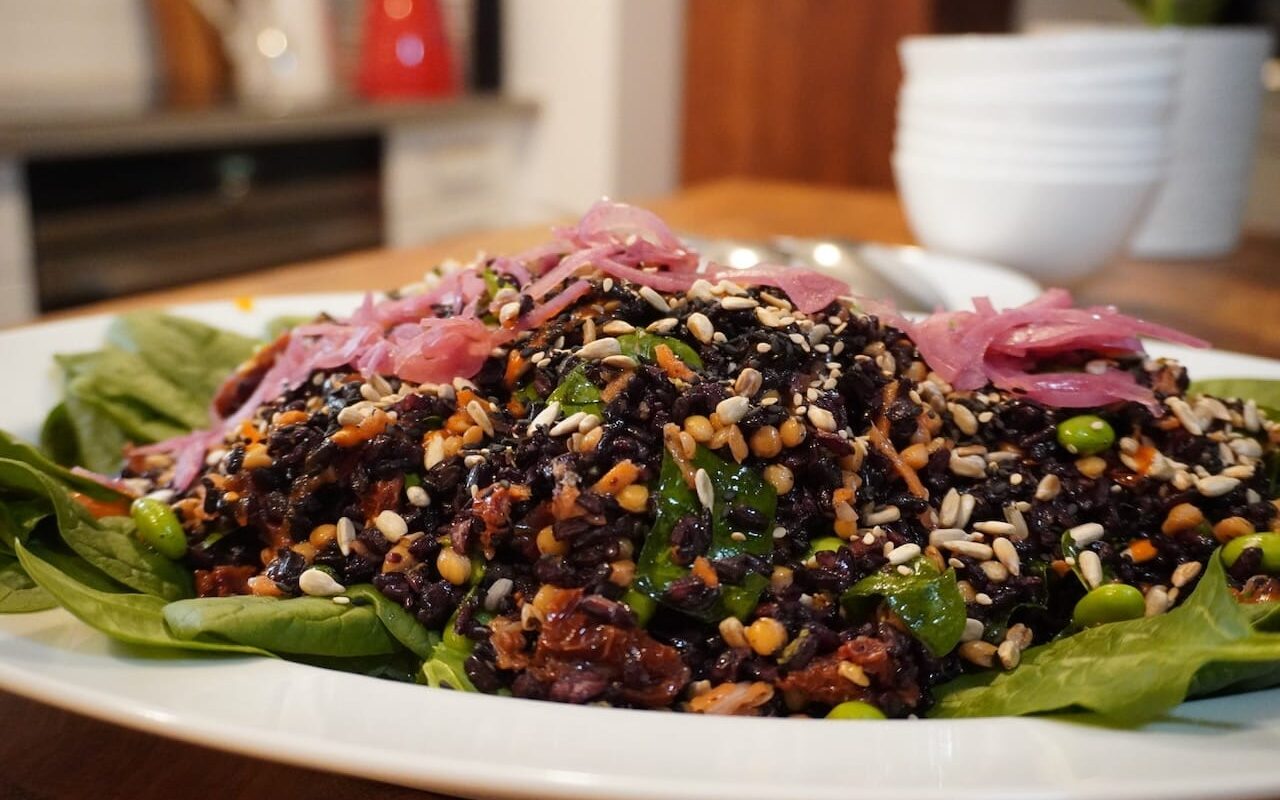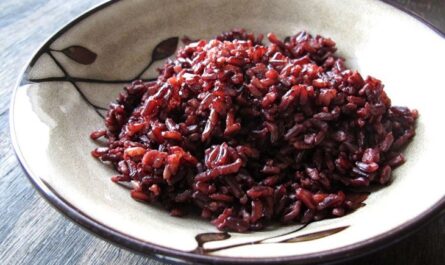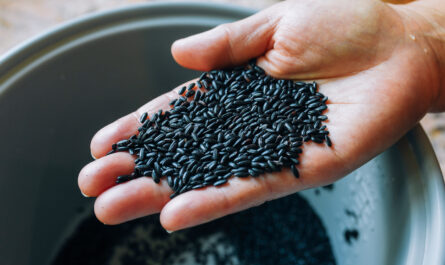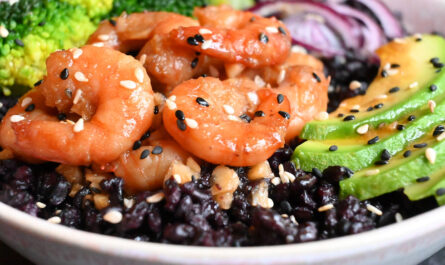When it comes to crafting the perfect sushi, the choice of ingredients is paramount. Among the variety of ingredients, rice plays a crucial role. Recently, there has been a growing curiosity about the differences between black rice vs purple rice. Both types of rice offer unique flavors and nutritional benefits, making them popular among sushi enthusiasts. In this article, we’ll delve into the nuances of these two types of rice and help you decide which is better suited for your next sushi creation.

Understanding Black Rice
Black rice, often referred to as ‘forbidden rice,’ is known for its deep black color which turns purple when cooked. It’s a type of whole grain rice that originates from Asia and is rich in antioxidants, particularly anthocyanins, which are also found in blueberries and blackberries. This gives black rice its distinctive color and numerous health benefits.
Nutritional Benefits of Black Rice
Black rice is packed with nutrients. It’s high in fiber, iron, and vitamin E, making it an excellent choice for those looking to boost their nutrient intake. The antioxidants present in black rice can help combat free radicals, reducing the risk of chronic diseases. For more details on its health benefits, you can visit this comprehensive guide.
Culinary Uses of Black Rice
Black rice is versatile in the kitchen. Its slightly nutty flavor and chewy texture make it a perfect addition to various dishes. It can be used in sushi, salads, and even desserts. Black rice is becoming increasingly popular in modern cuisine, including Italian dishes, as described in this Italian cuisine guide.
Exploring Purple Rice
Like black rice, purple rice is another whole grain variety that is gaining popularity for its health benefits and unique color. It is often a combination of white or brown rice mixed with black rice or black rice bran, which gives it a purple hue when cooked.
Nutritional Benefits of Purple Rice
Purple rice is also rich in antioxidants, fiber, and essential nutrients. It shares many of the health benefits of black rice, making it a nutritious addition to any diet. The purple pigment indicates the presence of anthocyanins, which are beneficial for heart health and reducing inflammation.
Culinary Uses of Purple Rice
Purple rice is often used in sweet and savory dishes. Its vibrant color makes it an attractive choice for sushi, offering an aesthetic appeal that is hard to resist. Additionally, it can be used in rice puddings and other desserts.
Black Rice vs Purple Rice: Key Differences
While both black and purple rice offer similar health benefits, there are a few key differences to note. The primary difference lies in their composition; black rice is a single variety, whereas purple rice is often a blend. This blend can affect the texture and flavor of the rice, making it slightly different from pure black rice.
Texture and Flavor
Black rice tends to have a nuttier flavor and a chewier texture, while purple rice can vary depending on its blend. The flavor of purple rice is generally milder, making it a versatile option for various recipes.
Color and Presentation
Both types of rice offer striking colors that can enhance the visual appeal of your dishes. Black rice remains dark even after cooking, while purple rice takes on a vibrant purple hue.
Choosing the Right Rice for Your Sushi
When it comes to sushi, the choice between black rice and purple rice depends on personal preference and the desired flavor profile. Both types offer health benefits and can elevate the presentation of your sushi. For those interested in a nutty flavor and chewy texture, black rice might be the better choice. However, if you’re looking for a milder taste with a vibrant color, purple rice is a great option.
Experimenting with Flavors
One of the joys of making sushi is experimenting with different flavors and textures. Consider using a combination of both black and purple rice in your sushi rolls to enjoy the best of both worlds. This can create a beautiful contrast in color and add depth to the flavor profile of your sushi.
Conclusion
Both black rice and purple rice are excellent choices for sushi lovers looking to add a nutritious and visually appealing element to their dishes. By understanding the differences and experimenting with flavors, you can create unique and delicious sushi that stands out. For more insights into using black rice in your cooking, check out this digestive guide.

Frequently Asked Questions
Is black rice better than purple rice for health?
Both black and purple rice offer significant health benefits due to their high antioxidant content. The choice depends on personal preference and specific dietary needs.
Can I mix black and purple rice for sushi?
Yes, mixing black and purple rice can create a beautiful contrast in color and offer a unique flavor profile for your sushi.
Where can I find recipes using black and purple rice?
You can find a variety of recipes and tips for using black and purple rice on culinary websites or dedicated sushi blogs like Sushi and Rice.
This article contains affiliate links. We may earn a commission at no extra cost to you.




